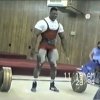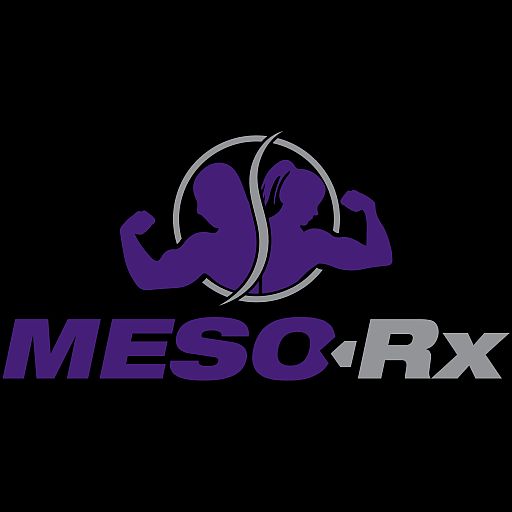I’d appreciate the information if you have the time and inclination to type it out.
I plan to write a more generalizable thesis on synergy between AAS that will demonstrate more broadly the principles of greater than additive combinations.
Here, I'll give you a worked example for testosterone-masteron-trenbolone (TMT) that has no semblance of reliance on the "19nor/test/DHT" broscience model (that I believe was worked out inductively by working backward from the case of TMT).
Recall that net muscle protein balance = muscle protein synthesis (MPS) - muscle protein breakdown (MPB). TMT acts on both sides of the equation, to increase MPS & decrease MPB.
Testosterone is an androst-4-ene-3-one, aromatizable & 5α-reducible. Testosterone increases both systemic IGF-I (via augmented GH secretory burst mass =quantity of GH secreted into bloodstream x unit distribution volume⁻¹ x pulse⁻¹; a consequence of its aromatization) & muscle IGF-I isoform activity (IGF-IEb mRNA, 4x increase in expression) [anabolic mechanisms, increasing MPS]. Testosterone is amplified by 5α-reductase to DHT in CNS & gonadal tissues, supporting sexual function. Testosterone is anticatabolic by suppressing expression of MuRF1 and atrogin-1 mRNA [decreasing MPB], and by suppressing expression of fibroblast growth factor-inducible 14 (Fn14) & IL-6 [the inflammatory response to exercise].
Trenbolone is a triene (Δ4,9,11), non-aromatizable & non-5α-reducible. Trenbolone
decreases systemic IGF-I by decreasing GH secretory burst mass but dramatically increases (muscle) satellite cell responsiveness to autocrine/paracrine IGF-I activity [anabolic mechanisms]. Trenbolone is potently insulin sensitizing (decreases blood glucose) and exerts potent antiglucocorticoid effects (decreases GR number & suppresses corticosterone) [anticatabolic mechanisms, decreasing MPB]. Trenbolone particularly (though a class effect of androgen) reduces fat mass in addition to increasing muscle mass. It does this by insulin sensitizing effects (e.g., decreased PPARγ; PPARγ controls formation of new fat cells, FA uptake and storage, and therefore insulin sensitivity), decreased differentiation of fat cell precursors (committing preadipocytes to a myogenic rather than an adipogenic lineage), increased lipolysis, and reduced lipid accumulation.
Masteron (Drostanolone; Dromostanolone) is a 5α-androstan-3-one, non-aromatizable & non-5α-reducible. Its particular unique property is its tissue-level modulation of estrogens, preventing the uptake of estrogens into, e.g., breast cells. In this, it is quite unlike SERMs, that antagonize estrogen receptor in hypothalamus & pituitary. Besides this property, it is a relatively attenuated anabolic that straightforwardly agonizes the AR.
In combination, TMT results in a hardened physique with substantial fat loss (far > than is explained by the increased metabolic cost of skeletal muscle) and substantial muscle gain, with tissue-selective antiestrogenic action, during caloric restriction or surplus. Test's 5α-reduction to DHT provides for basal sexual function. Its increasing systemic IGF-I provides for total-body growth. Its anticatabolic effects are synergistic by working by different systems as Tren's. Tren combines increased muscular/SC responsiveness to IGF-I. Mast's tissue-level estrogen modulation controls excessive aromatic product (estradiol) activity from Test. There is synergy between all of these features.









